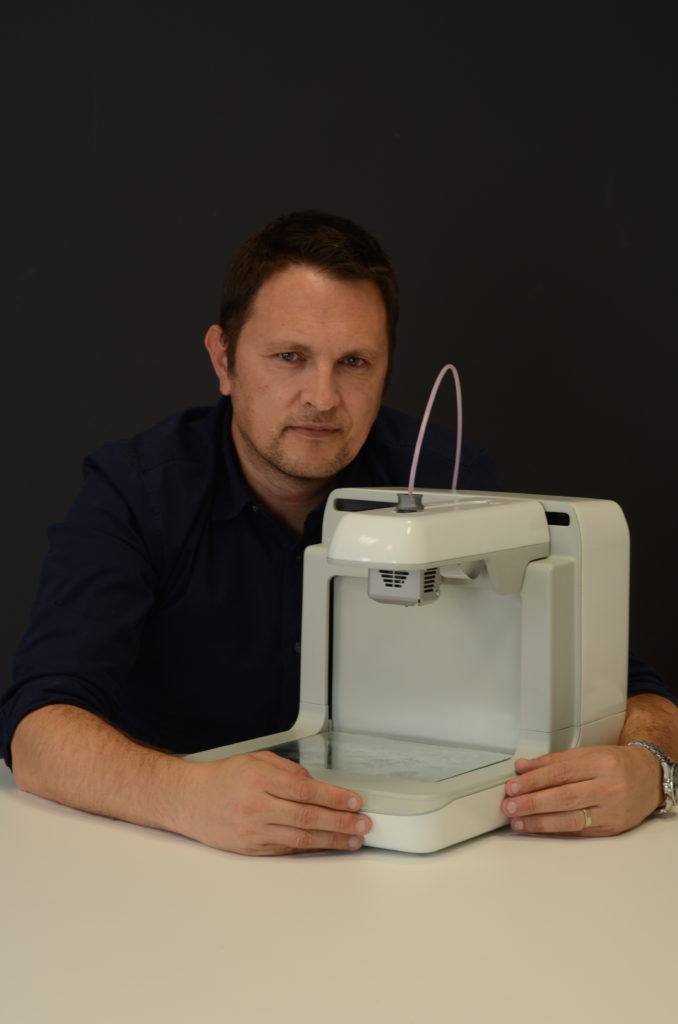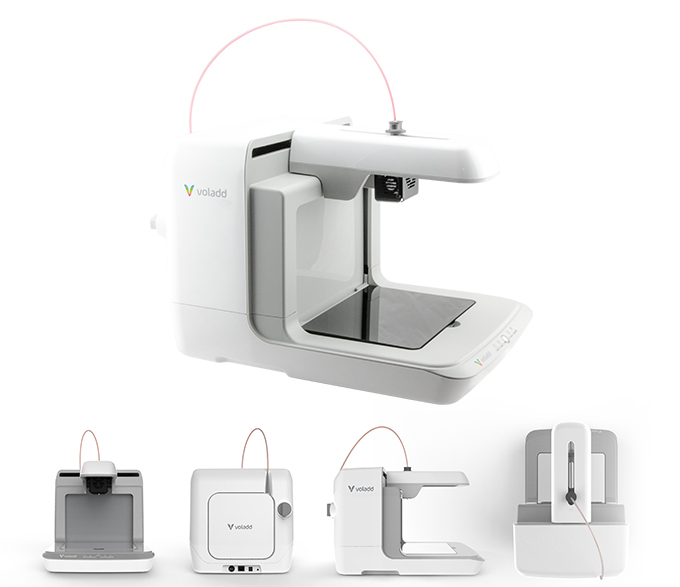3D printing is increasingly used in education. Institutions as well as companies are doing their best to encourage students to improve their skills in STEM and 3D printing.
One thing is certain, it is definitely important to acquire a certain know-how in technologies that are shaping the future. However, it is also important to be fully aware of their limitations or dangers.
In order to tackle this subject, we approached Tumaker, a manufacturer of professional and industrial 3D printers based in the Basque Country. The company recently launched Voladd, a web-connected 3D Printer for domestic environments, education and companies. Their 3D printers enable a wide range of applications in several fields: art, architecture, industry, medical industry and education.
Tumaker’s CEO, Jon Bengoetxea shares his thoughts on the use of 3D printing at school.
From what age should the student get in touch with 3D printing?
Speaking about the age at which the student should get in touch with 3D printing, Jon Bengoetxea did not give a particular age. According to the CEO, it all depends on the 3D printer, he/she begins his/her journey with. Indeed, a complex equipment can be an obstacle for the youngest ones. The more the 3D printer is practical, the best it is to learn.
At the age of 6 for instance, children simply have to learn how to select previously designed 3D models, send them to the printer and enjoy looking at the printing process.
We asked Jon Bengoetxea if there is any regulation which governs the use of 3D printers at school. Does every school determine the technology that best fits its students?
In order to exploit the values of a 3D printer in the educational sector, people must take into account that it has to be easy enough to operate but complex enough to learn valuable things from it. Most of the time, schools that can afford this kind of innovative technology mainly want to broaden up their technology spectrum to improve the offer for their students. It is known that 3D designing is a really useful skill not only nowadays but also in the near future. Having access to 3D printers can turn their digital designs into something real, greatly enriching the educational process by adding the manufacture in real time.
The 3D printers that best fit students are usually easy to use, so teachers do not have to spend much time learning and teaching how to use them. Connected, to make students able to operate them on the cloud. Multidevice, so the installation of any external software is avoided. Integrated, a machine with an easy way of saving, uploading and interacting with 3D designs and, last but not least, stimulating, so every student enjoys the learning process and wants to keep practicing.
What initiatives can be implemented in order to facilitate learning of STEM including 3D printing by young people?
3D printing in education is essential because it integrates making into learning. Now that the prices are more affordable, a lot of schools are thinking of buying 3D printers, but they do not really see the advantages or benefits that they create.
In order to facilitate learning of STEM, each 3D printing company should provide, along with an easy functioning fabrication platform, an educational planning with several designs ready to print instantly. Therefore, teachers will spend less time on training and maximize the real education.
3D printers can help in most assignments. They can help students envision equations and elaborate graphs in Math. They can make them understand in a better way geological formations or earthquake data in Geology. They can make History a more fun subject by 3D printing replicas of ancient artifacts, or exploit their creativity by bringing 3D designs into artwork in Art classes, and many more.

What would be the dangers of 3D Printing for young people?
Speaking of possible physical damage, 3D printers can be dangerous. Children should use these machines only if they are being closely monitored by a responsible adult, such as it is done with other electronic machines.
The most common risks of operating with a 3D printing are the probable hand entrapment in between several parts of the printer and the burns that can be produced by touching the extruder, which can reach 250º. The level of dangerousness of a 3D printer is comparable to any other domestic electronic device; it will not be a problem if the children is well educated and knows what he can and what he cannot do with it.
Your last word?
Nowadays 3D printers are becoming a tool exploitable by many different sectors, and we believe that education should be one that takes the most benefit out of them. With the adequate machine (great performance, trustworthy, affordable and easy to use) and the ideal education plan (cured and great quality 3D designs categorized by assignments and ages and located in a Cloud base system), 3D printing could revolutionize the school plan in a better way. It could ignite the imagination of students, engage reluctant learners and solve real world problems among more great things.
For more information about Tumaker’s educational projects, feel free to visit www.voladd.com.
For further information, follow us on our social media and subscribe to our newsletter! Would you like to be featured in the next issue of our digital magazine? Or subscribe to 3D Adept Mag? Send us an email at contact@3dadept.com
//pagead2.googlesyndication.com/pagead/js/adsbygoogle.js
(adsbygoogle = window.adsbygoogle || []).push({});

